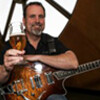Big changes afoot this year for the aptly named 5th version of our Stone Vertical Epic Ale series. First, as you may have noticed, this is being written not by Lee Chase, but by Mitch Steele and John Egan. Lee has moved on to other things, but since this was his last recipe formulation for Stone Brewing Co., we will try and carry on his tradition of providing all the information you need to brew this tasty beer at home. We’re really happy with this year’s Stone 06.06.06 Vertical Epic Ale. This is a very dark ale fermented with Belgian Trappist yeast, so the flavors in it are really deep and complex. The Belgian yeast clove notes combine nicely with the roast malt flavors, with dried cherry and anise undertones. The flavors imparted by the special roasted malt are very rich, smooth, and silky. It will be interesting to see how this beer ages, and how the smooth roasted malt characters evolve with the spicy Belgian yeast character over time. As always, the instructions below are for an all-grain brew. If you need help converting to an extract recipe, or need help with formulas, you can consult the great homebrew books that are available, contact members of your local homebrew club, or contact your local homebrew shop for help. Ingredients Pale Two-Row Malt - 87.5% Dark Wheat - 7% Carafa Special II - 5% White Wheat - 0.5$ Magnum Hops - 14.4% Alpha, ~1 oz/gallon Mt Hood Hops - 4.2% Alpha ~.16 oz/gallon White Labs WLP500 Belgian Trappist Yeast Specifications Starting Gravity: 20 °P (1.083 SG) Terminal Gravity: 4.1 °P (1.017 SG) ABV: 8.66% IBU: 25-30 Milling As you mill your grain, be sure to watch the consistency of your grind. Make sure there is plenty of intact husk material from the Pale Malt, because the wheat malts and the Carafa Special II have no husk. You’ll need that pale malt husk for good lautering clarity and runoff speed, especially because the wheat malts add a lot of protein which can cause your run-off to stick. If you are milling just prior to brewing, this is a good time to start heating your mash water. We like to heat our water very hot, above 200°F, and then let it cool to 175 or so. This sanitizes the water and flashes off any chlorine added by your city water supplier. You don’t want that chlorine in your mash. NOTE: At certain points in the brewing process, Lee always made some good music and beverage recommendations to brew by, so we’re going to try and continue with that tradition. Lee suggests Mambo for heating the mash water, and we’ll stick with that tried and true recommendation. Mashing Mash in with your 170°F water to achieve 148°F mash in temperature. Stir to get good mixing (no dry grain) and then, using an infusion mash profile, hold at 148°F for 60 minutes. John: To start off the mashing process, a nice Belgian Wit and a bagel with cream cheese help get things moving in the right direction. Turn on some Willie and Waylon, and you are almost certain to hit your target mash temp. Let the country music ride while your mash rests, it maintains temperature much better that way. Mitch: If you are brewing early in the morning, like I try to do, I recommend coaxing your malt enzymes into action with something a little soothing, like Merl Saunders’ Blues From The Rainforest, accompanied by a good hot cup of strong, locally roasted coffee. Lautering/Kettle After a 60 minute conversion, vorlauf (recirculate) your wort until it is reasonably clear. Of course, this will be hard to discern, as the wort will be very dark, but at the least, try to make sure you’ve filtered all the big particles out of the wort. Draw off wort into your kettle until you’re just above the grain bed, then start adding sparge water that’s been heated to about 165°F. Maintain a liquid level ½” to 1” above your grain bed to avoid oxidizing your grain and wort. Stop your sparging so that when your kettle is full, you’ve reached about about 6.5 gallons if you are doing a 5 gallon batch. Try to figure on a 90 minute boil with 7-8% evaporation. Just make sure your last runnings are above 2-2.5°P-you don’t want to extract those harsh flavors from the grain husks. Start cranking the heat to the wort in the kettle and crank some tunes: John: Getting up to a boil is much easier if you turn up some Descendents VERY loud. This actually helps the flame burn hotter because of the massive airflow coming from your speakers, and the generous disregard for authority in the lyrics. Petrus Aged Pale or some Goudenband go well with this stage of the brew, and give you that sour kick to show the wort in the kettle who’s in charge. Mitch: At this point, I like to help get things rocking and rolling with some surf tunes from The Ventures, Davie Allan, or The Challengers. And, of course, it’s now time for a good San Diego beer, like a Stone Pale Ale. Kettle Boil Once you’ve reached boil, wait 15 minutes and add the Magnum hops. If you start seeing wort foaming, turn down the heat a bit and toss some hops in to help break down the foam. If you are using hop pellets, add slowly, because they will actually result in more foam until fully dissolved in the wort. Boil 75 minutes after the hop addition. While you are boiling, take some time to make sure your wort chilling device and fermenting vessel are clean and sanitized. 10 minutes before the end of the boil, add some kettle finings, like Irish Moss or Whirlfloc. John: When boiling, I like to play fetch with my dog and rock out to some Skynyrd, Charlie Daniels, or David Allan Coe. The deep southern country helps isomerize the hop oils, and make you very glad you aren’t living during the prohibition. This is what it’s all about! Mitch: A 90 minute boil is nice because it allows for a little downtime. Kick back for a few minutes, put your feet up, pop open a nice bottle of your favorite Belgian Trappist beer, and contemplate your brew. I find that some laid back country blues-funk from J.J. Cale puts me in the right frame of mind for contemplation. Chilling and Yeast Pitching When the boil is complete, add your Mt. Hood hops, and stir the wort to create a whirlpool. The whirlpool action helps get all of the solid protein material and hop material formed in the boil to settle out at the bottom of your pot. At this point you may ask yourself: “should I stir clockwise or counterclockwise?” It really doesn’t matter, the coriolis effect doesn’t impact trub settling substantially. Then it’s time to cool the wort. Whatever method you use, be sanitary, and try to get the wort cool in a short time. Wort that is hot, but not boiling, can form dimethyl sulfide, which tastes like cream corn. We don’t want this flavor in our beer, so cool the wort fast! When the wort has been cooled into a fermentor, pitch the yeast and hold at 70°F. Fermentation/Aging/Bottling Hold at ~70°F until you reach about 4°P. Rack and chill if possible, age for 1 week to days, then you are ready to prime and bottle. I like to use dry malt extract for priming, at about 1.25 cups per 5 gallons. Corn sugar also works, use a little less, maybe ¾-1 cup for 5 gallons. Or, to make life easier, simply rack the beer into a clean and gas purged 5 gallon Cornelius keg and either prime or force carbonate and enjoy!
Try your hand at brewing all of the Stone Vertical Epic Ales. Homebrew recipes for each can be found at:
- Stone 02.02.02 Vertical Epic Ale
- Stone 03.03.03 Vertical Epic Ale
- Stone 04.04.04 Vertical Epic Ale
- Stone 05.05.05 Vertical Epic Ale
- Stone 06.06.06 Vertical Epic Ale
- Stone 07.07.07 Vertical Epic Ale
- Stone 08.08.08 Vertical Epic Ale
- Stone 09.09.09 Vertical Epic Ale
- Stone 10.10.10 Vertical Epic Ale
- Stone 11.11.11 Vertical Epic Ale
- Stone 12.12.12 Vertical Epic Ale


Add new comment